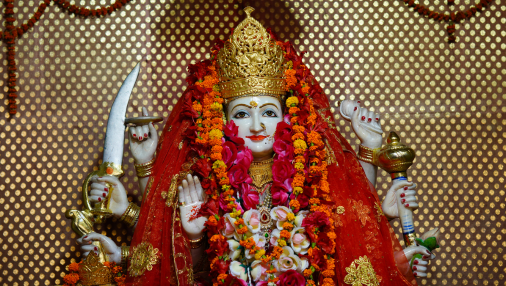Why Do We Celebrate 9 Days of Navratri?
Navratri is one of the most vibrant and widely celebrated festivals in India. The word Navratri itself means “nine nights” (from Sanskrit nava = nine, ratri = nights). This festival is dedicated to the worship of Goddess Durga and her nine divine forms. But why exactly do we celebrate Navratri for nine days? The answer lies in a deep blend of mythology, spirituality, and cultural traditions.
Mythological Significance
According to Hindu mythology, the nine days of Navratri mark the epic battle between Maa Durga and the demon king Mahishasura. Mahishasura was blessed with a boon that no man or god could kill him, which made him invincible. To end his tyranny, the trinity of Brahma, Vishnu, and Shiva created Goddess Durga. She fought Mahishasura for nine long days and nights, and on the tenth day (Vijayadashami) she defeated him. These nine days symbolize the struggle between good and evil, reminding us that righteousness always triumphs.
The Nine Forms of Goddess Durga
Each day of Navratri is dedicated to one of the nine forms of Goddess Durga, known as Navdurga. Worshipping these forms represents a spiritual journey from ignorance to wisdom, weakness to strength, and darkness to light.
- Shailaputri – Symbol of strength and devotion.
- Brahmacharini – Represents wisdom and penance.
- Chandraghanta – Signifies bravery and courage.
- Kushmanda – The creator of the universe.
- Skandamata – Nurturing and protective nature.
- Katyayani – The warrior form of Durga.
- Kalaratri – Destroyer of negativity and fear.
- Mahagauri – Symbol of peace and purity.
- Siddhidatri – Goddess of supernatural powers and perfection.
Spiritual Importance
Navratri is more than just a festival; it is a period of purification and self-discipline. The nine days symbolize the cycle of inner growth:
- First 3 days – Destroying negativity and evil within.
- Next 3 days – Cultivating positivity, devotion, and discipline.
- Final 3 days – Gaining wisdom, spiritual strength, and self-realization.
Fasting during Navratri is also symbolic. It helps detoxify the body and mind, making a person more receptive to spiritual energy.
Seasonal and Cultural Aspect
Navratri is celebrated at the beginning of two major seasons: spring and autumn. These are times of climatic change, and fasting with a light diet helps the body adjust. That is why food during Navratri is satvik (pure, vegetarian, and easy to digest).
Moreover, Navratri is not only about rituals but also about celebration, dance, and music. In Gujarat, the famous Garba and Dandiya Raas are performed, while in Bengal, Durga Puja is celebrated with grandeur. Across India, Navratri becomes a festival of unity, devotion, and joy.
Symbolism of 9 Days
The number 9 has special significance in Hinduism. It represents completeness and is considered divine. In numerology, 9 is the number of spirituality, selflessness, and service to humanity. Celebrating 9 days is symbolic of honoring the divine feminine energy in its entirety.
Lessons from Navratri
- Good always wins over evil.
- Discipline and devotion are necessary for growth.
- Strength of women (Shakti) is to be respected and worshipped.
- Unity in diversity is India’s true culture, as Navratri is celebrated differently across states but with the same spirit.
Conclusion
The nine days of Navratri are not just about rituals but about celebrating life, courage, and faith. Each day inspires us to conquer negativity, strengthen our inner self, and walk on the path of righteousness. By worshipping the nine forms of Maa Durga, we are reminded that divine energy exists within all of us, and with dedication and devotion, we can overcome any challenge.
Thus, Navratri is a festival of faith, discipline, celebration, and victory of good over evil—a spiritual journey that lasts nine days but inspires us throughout the year.

